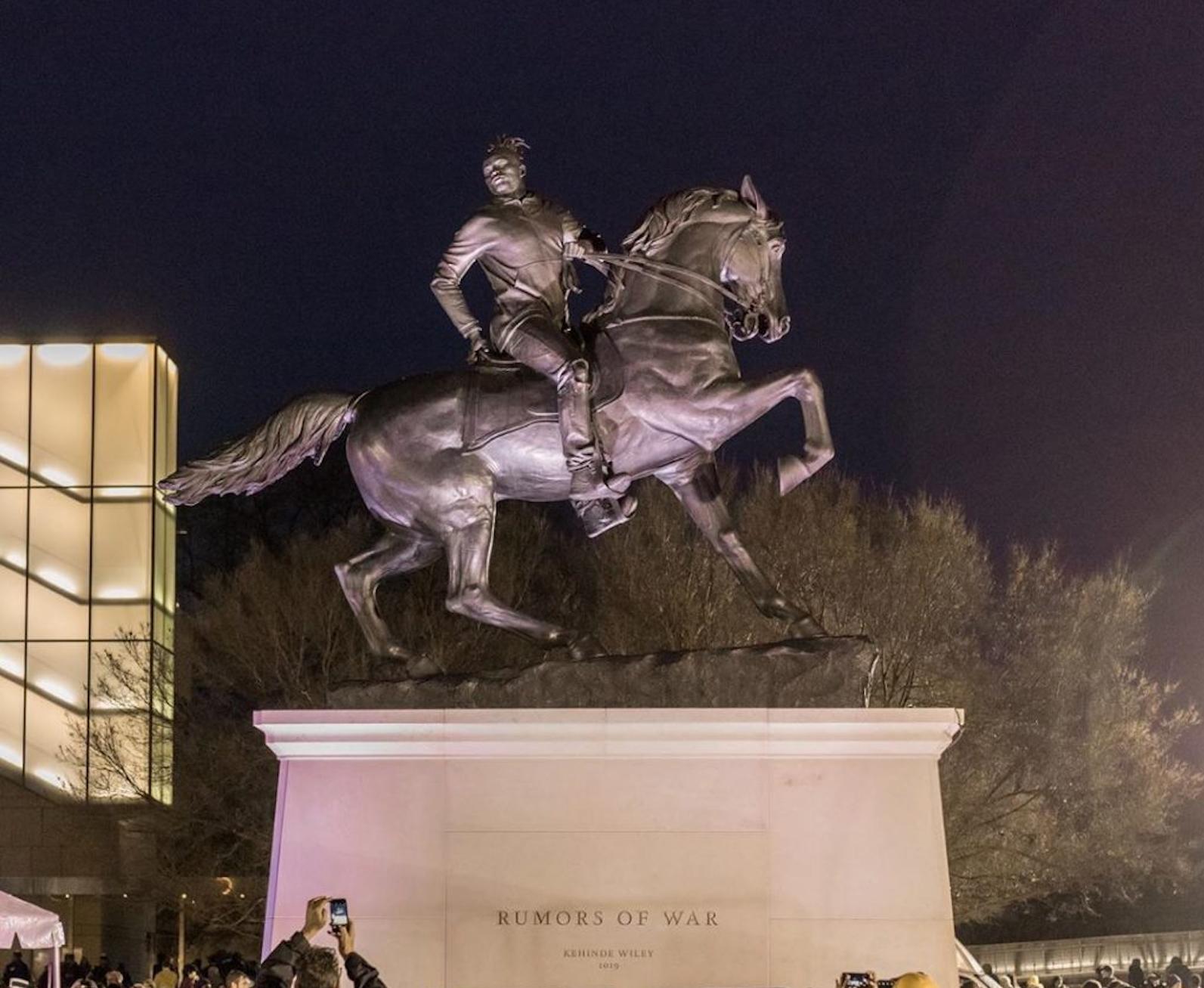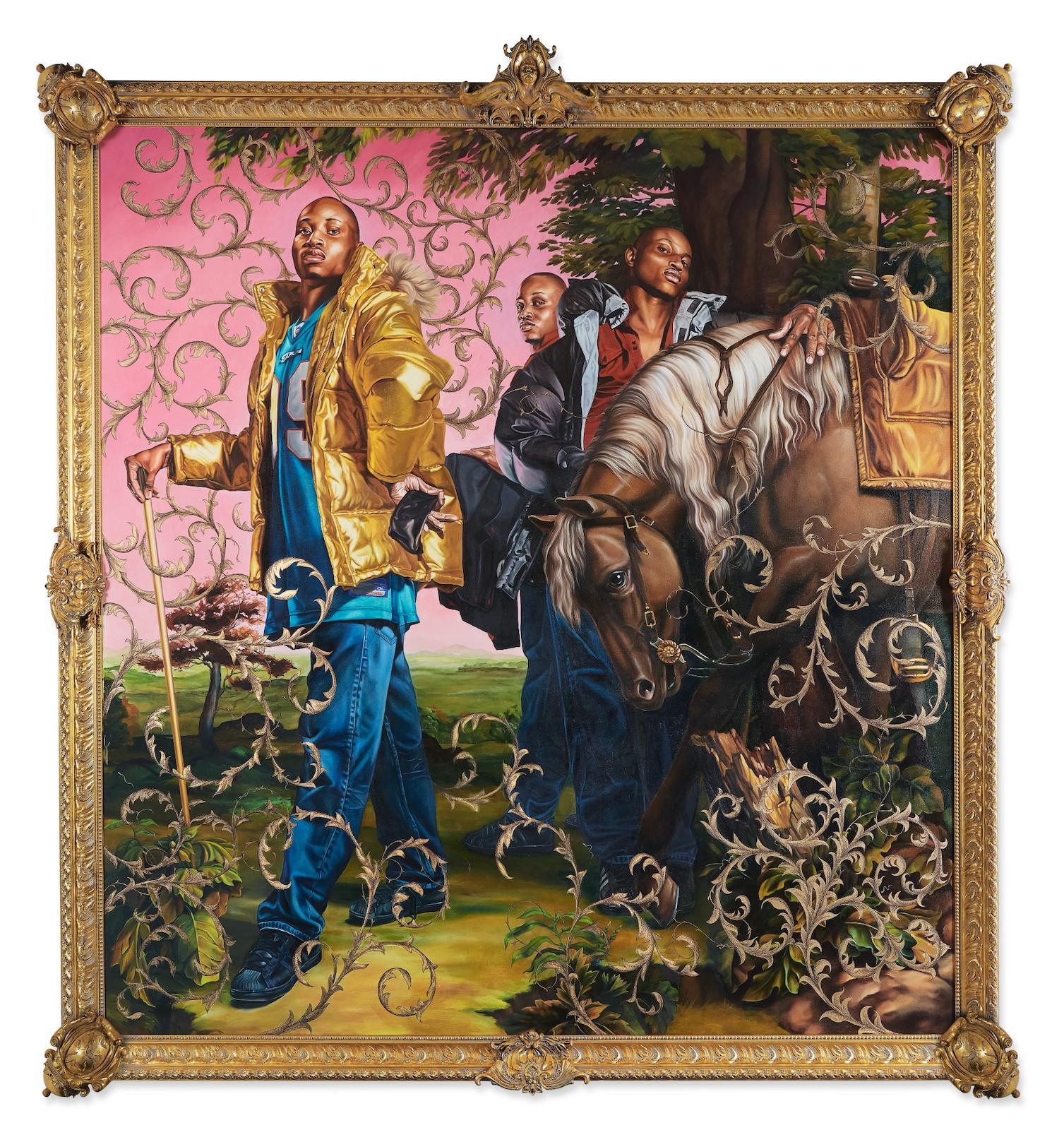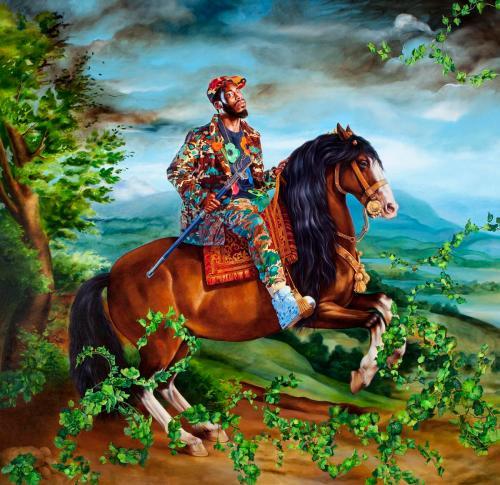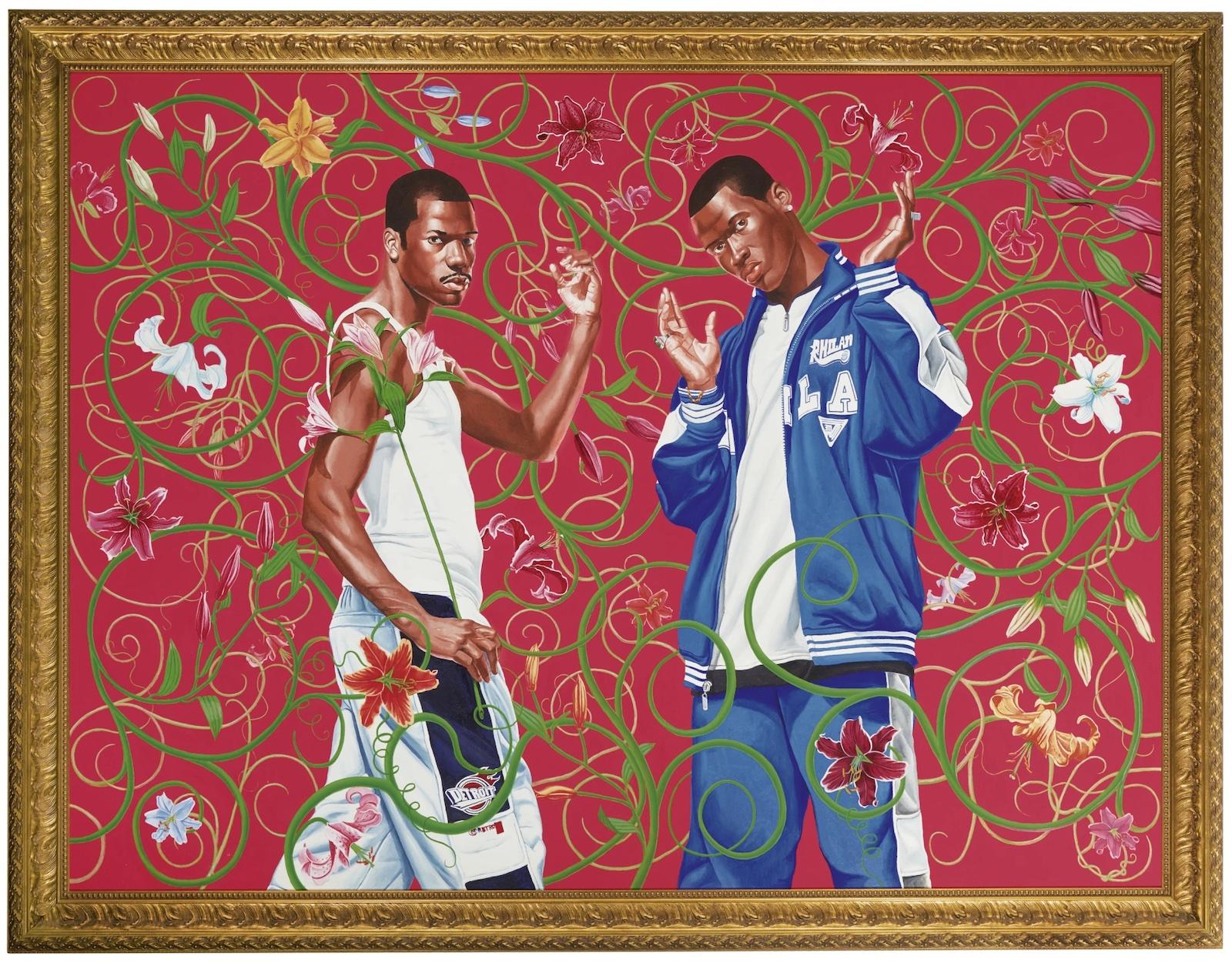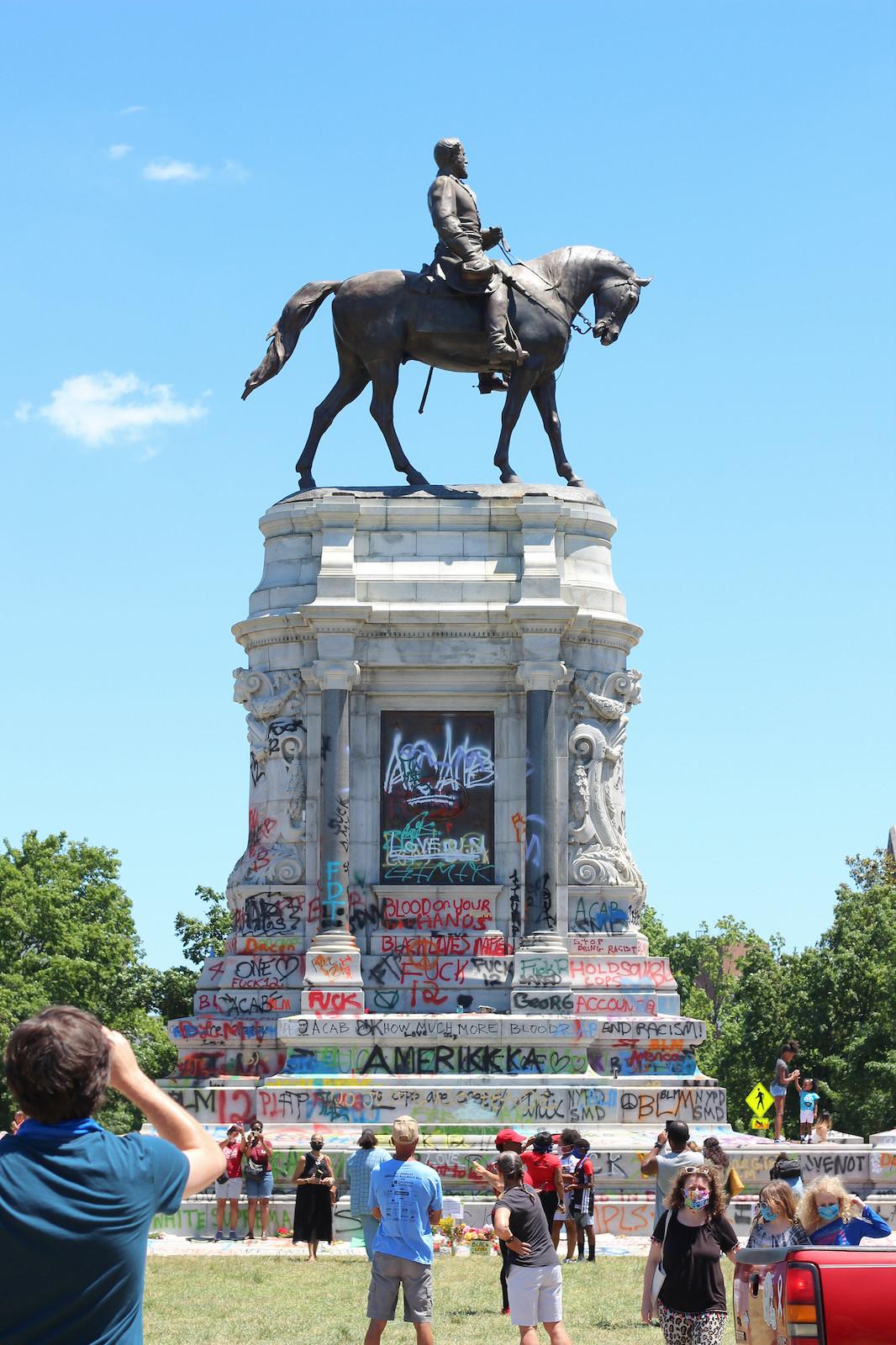The equestrian portrait of power is not a new addition to Wiley’s catalogue; Equestrian Portrait of Philip IV (2017) directly challenges the narrative of whiteness being synonymous with power and wealth. Rumors of War seeks to do the exact same thing, originally debuting in Times Square, where it stood for several weeks prior to the unveiling of its permanent homesite at the Virginia Museum of Fine Arts in Richmond, the capital of the Confederacy.
Monument Avenue in Richmond is a mile-and-a-half boulevard that, until recently, celebrated defenders of slavery, according to art historian Noah Randolph. The statues of Confederate generals such as J.E.B. Stuart and Robert E. Lee have since been removed from Monument Avenue after public backlash and outrage against their existence reached new heights during protests over the deaths of Ahmaud Arbery, George Floyd, and Breonna Taylor in 2020. Randolph asserts that such monuments sought to place slave owners and white supremacists on a pedestal of morality in an effort to manipulate the narrative of the Civil War.




